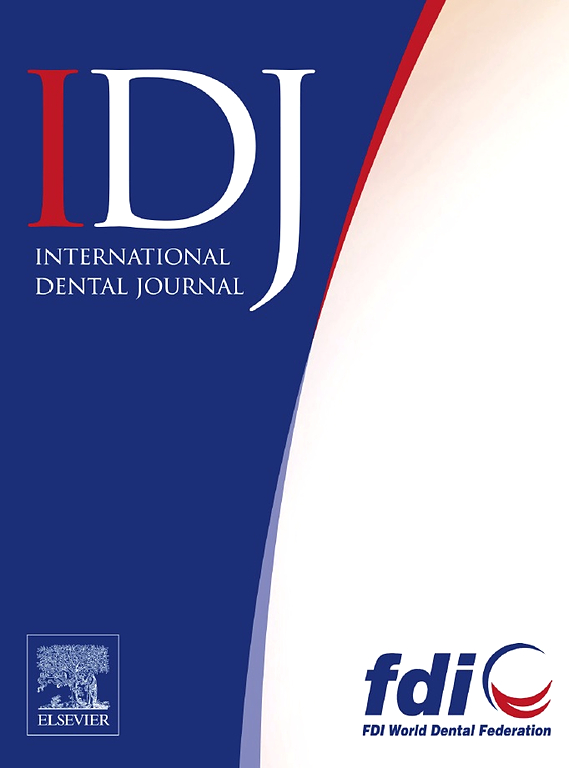The Joint Impact of Heavy Metals and Polycyclic Aromatic Hydrocarbons on Periodontitis
IF 3.7
3区 医学
Q1 DENTISTRY, ORAL SURGERY & MEDICINE
引用次数: 0
Abstract
Objective
Heavy metals (HMs) and polycyclic aromatic hydrocarbons (PAHs) are significant environmental pollutants, raising growing concerns about their potential impact on human health, particularly oral health. This study aimed to investigate the combined effects of these pollutants on periodontitis (PD) – a prevalent chronic inflammatory disease affecting tooth-supporting structures.
Methods
This study utilized the National Health and Nutrition Examination Survey data to examine interactions between HMs, PAHs, and PD. A comprehensive analytical approach included survey-weighted multivariate logistic regression to evaluate individual pollutant exposures, restricted cubic splines to assess dose-response relationships, and advanced models such as Weighted Quantile Sum regression, Quantile G-Computation (qgcomp), and Bayesian Kernel Machine Regression to analyse joint pollutant effects.
Results
Findings revealed significant associations between high levels of certain blood HMs – particularly cadmium (Cd) and lead (Pb) – and increased PD risk. Elevated urinary levels of PAH metabolites were similarly linked to higher risk. Importantly, the study highlights that risk is substantially amplified by the synergistic effects of combined HMs and PAHs exposure. Weighted Quantile Sum, qgcomp, and Bayesian Kernel Machine Regression consistently demonstrated that simultaneous exposures lead to a notably higher PD risk, suggesting that traditional single-pollutant assessments may underestimate health risks.
Conclusion
This study provides robust evidence that exposure to both individual and combined HMs and PAHs significantly elevates PD risk. These findings underscore the importance of considering cumulative and interactive pollutant effects in public health risk assessments.
重金属和多环芳烃对牙周炎的共同影响
重金属(HMs)和多环芳烃(PAHs)是重要的环境污染物,它们对人类健康,特别是口腔健康的潜在影响日益引起人们的关注。本研究旨在探讨这些污染物对牙周炎(PD)的综合影响,牙周炎是一种影响牙齿支撑结构的常见慢性炎症性疾病。方法利用美国国家健康与营养调查数据,研究HMs、PAHs和PD之间的相互作用。综合分析方法包括调查加权多变量逻辑回归来评估个体污染物暴露,限制三次样条来评估剂量-反应关系,以及加权分位数和回归、分位数g -计算(qgcomp)和贝叶斯核机回归等先进模型来分析联合污染物效应。研究结果揭示了高水平的某些血液HMs -特别是镉(Cd)和铅(Pb) -与PD风险增加之间的显著关联。尿中多环芳烃代谢物水平升高同样与高风险有关。重要的是,该研究强调,HMs和PAHs联合暴露的协同效应大大放大了风险。加权分位数和、qgcomp和贝叶斯核机回归一致表明,同时暴露导致显著更高的PD风险,这表明传统的单一污染物评估可能低估了健康风险。结论本研究提供了强有力的证据,表明暴露于单独或联合暴露于HMs和PAHs会显著增加PD的风险。这些发现强调了在公共卫生风险评估中考虑累积和相互作用污染物影响的重要性。
本文章由计算机程序翻译,如有差异,请以英文原文为准。
求助全文
约1分钟内获得全文
求助全文
来源期刊

International dental journal
医学-牙科与口腔外科
CiteScore
4.80
自引率
6.10%
发文量
159
审稿时长
63 days
期刊介绍:
The International Dental Journal features peer-reviewed, scientific articles relevant to international oral health issues, as well as practical, informative articles aimed at clinicians.
 求助内容:
求助内容: 应助结果提醒方式:
应助结果提醒方式:


